The Anubis Gates by Tim Powers – Annotated Bibliography Entry
The following is a sample entry from A Comprehensive Dual Bibliography of James P. Blaylock & Tim Powers for The Anubis Gates by Tim Powers.
[102] The Anubis Gates, Tim Powers
A. _____, Ace Books, New York. December, 1983. ISBN 0-441-02380-0. 8vo. Advanced reading copy or uncorrected proof – paperback in pale blue wraps.
B. _____, Ace Books, New York. December, 1983. ISBN 0-441-02380-0. 12mo. First Edition. Paperback with cover illustration by Don Brautigan.
C. _____, Chatto and Windus, London, UK. 1985. ISBN 0-7011-2929-8. 8vo. Paperback uncorrected proof. Cover text printed in black with a pattern composed of cherubs reversed out of a burgundy field.
D. _____, Chatto and Windus, London, UK. 1985. ISBN 0-7011-2929-8. 8vo. First hardback edition with dustcover illustrated by Don Macpherson.
E. _____, Chatto and Windus, London, UK. 1985. ISBN 0-7011-2930-1. 8vo. Paperback edition with cover illustrated by Don Macpherson.
F. _____, Grafton, UK. 1986. ISBN 0-586-06550-4. 8vo. Paperback.
G. Les Voies d’Anubis, J’Ai Lu, France. 1986. ISBN 2-277-22011-6. 12mo. Cover art by Philippe Caza and translated into French by Gérard Lebec.
H. _____, Ace Books, New York. 1988. ISBN 0-441-02382-7. 12mo. “6th Edition” reprint. Paperback with cover illustration by Jean Francois-Podevin.
I. Die Tore zu Anubis Reich, Heyne, Germany. 1988. 8vo. ISBN: 3453870700. With a forward by George R. R. Martin.
J. Las Puertas de Anubis, Martinez Roca, Barcelona, Spain. 1988. 8vo. In Spanish. Cover illustration by Tony Roberts. Translated by Albert Solé.
K. Anubis portarna, Bra Spänning, Hoganas, Sweden. 1988. Translated by Sven Christer Swahn.
L. _____, Ziesing, Shingletown, CA. 1989. ISBN 0-929480-11-2. 8vo. First US Hardback edition, with introduction written by Ramsey Campbell, dustjacket illustration by J. K. Potter, interior illustrations by Mark Bilokur, and hand lettering by Arnie Fenner. Limited issued in 500 copies, numbered, slipcased and signed by Powers, Campbell and Bilokur. Parchment signature page.
M. _____, Ziesing, Shingletown, CA. 1989. ISBN 0-929480-10-4. 8vo. First US Hardback edition, with introduction written by Ramsey Campbell, dustjacket illustration by J.K. Potter, interior illustrations by Mark Bilokur, and hand lettering by Arnie Fenner. Trade editions issued in 2000 copies, unsigned, with no slipcase.
N. Le Porte Di Anubis, Fanucci, Rome, Italy. 1991. Translated into Italian by Bernardo Cicchetti.
O. De Poorten van Anubis, Meulenhoff, Amsterdam, Holland. 1992. ISBN 90-290-4261-3. Translated by M. K. Struyter sj.
P. Anubiksen Portit 1, Kirjayhtymä, Helsinki, Finland. 1992. Volume 1.
Q. Anubiksen Portit 2, Kirjayhtymä, Helsinki, Finland. 1993. Volume 2.
R. Os Portais de Anúbis, Editora 34, Rio de Janiero, Brazil. 1993. In Portuguese – translated by Eliana Sabino.
S. _____, HarperCollins, London, UK. 1993. ISBN 0-586-06550-4. 12mo. 1 3 5 7 9 8 6 4.2.
T. ?, Hayakawa, Japan. ISBN 4-15-020181-1.1993. Translated by Otoma Sumito. Cover art by Hitoshi Yoneda. Volume One.
U. ?, Hayakawa, Japan. ISBN 4-15-020182-X.1993. Translated by Otoma Sumito. Cover art by Hitoshi Yoneda. Volume Two.
V. Les Voies d’Anubis, J’Ai Lu, France. 1994. ISBN 2-277-22011-6. 12mo. Cover art by Philippe Caza and translated into French by Gérard Lebec.
W. Os Portais de Anúbis, Editora 34, Rio de Janiero, Brazil. 1995. ISBN 85-85490-58-6. In Portuguese – translated by Eliana Sabino.
X. Le Porte di Anubi, Fanucci, 1995. ISBN 88-347-0519-X.
Y. Врата Анубиса, Век Дракона, Moscow, Russia. 1996. ISBN 5-17-018683-5.
Z. Врата Анубиса, Век Дракона, Moscow, Russia. 1996. ISBN 5-9577-0010-X.
AA. Brány Anubisovy, Najada, Prague, Czechoslovakia. 1996. Translated by Vaclav Kriz.
AB. _____, Ace Books, New York. January, 1997. ISBN 0-441-00401-6. 12mo. #02380. First Edition. Paperback with cover illustration by Jean Francois-Podevin (Jackal with moon behind his ears and pocket-watch in foreground). 10 9 8 7 6 5 4 3 2 1.
AC. _____, Legend, London, UK, 1997. ISBN 0-09-963421-X. 12mo.
AD. Wrota Anubisa, Amber, Warsaw, Poland. 1997. ISBN 83-7169-511-X. Translated by JAN KABAT.
AE. Les voies d’anubis, J’ai Lu, France. January, 1999. ASIN 2290020117.
AF. Las Puertas de Anubis, Ediciones Gigamesh, Barcelona, Spain. 1999. ISBN 84-930663-1-1 Translated into Spanish by Albert Solé. Preface by Juan Carlos Planells. Cover art by Rafa Fonteriz.
AG. שערי אנוביס, Opus Press, Israel. 2000. Hebrew version translated by Vered Tuchterman.
AH. Les voies d’anubis, J’ai Lu, France. February, 2001. ASIN 2277220116. Cover art by Philippe Caza and translated into French by Gérard Lebec.
AI. Anubis Kapilari, Turkey. 2001. ISBN 975-6902-42-6. Trans. by Ardan Tüzünsoy.
AJ. Anubisz Kapui, Hungary. 2002. Volume I. ISBN 9789639238435.
AK. Anubisz Kapui, Hungary. 2002. Volume II. ISBN 9798639238459.
AL. Las Puertas de Anubis, Ediciones Gigamesh, Barcelona, Spain. 2002. ISBN 84-930663-1-1 Translated into Spanish by Albert Solé. Preface by Juan Carlos Planells. Cover art by Corominas.
AM. Les voies d’anubis, J’ai Lu, France. February, 2003. ISBN 2-290-33693-9. Cover art by Philippe Caza and translated into French by Gérard Lebec.
AN. _____, Gollancz, UK. September, 2005. ISB: 0575077255.
The Chatto & Windus Advance Proof is quite scarce and one of the most sought-after of Powers book states. The Chatto & Windus hardback is also fairly uncommon in a good condition.
Chalker & Owings report that the Ziesing edition had an overrun of the slipcases and sold the extra ones separately, so some Trade edition books might now sport slipcases. Some of the signed copies – Limited and Trade – are beautifully hand-treated by Powers, with various of his characteristic sketches along with his signature on the title pages. The pen-and-ink stippled and cross-hatched interior illustrations by Mark Bilokur really crystallize this book as a top-notch piece – the illustrations are of very high quality, beautifully executed, and apropos for the work. The cover art was also nicely done, and J. K. Potter was given a Readercon award for Jacket Illustration for it. Ziesing used a red ink stamp on the title pages to mark the presentation copies. In some few cases, there are trade editions signed by both Powers and Blaylock on the title page, and then they have signed at the first poem “quotation” of the “Twelve Hours of the Night” as William Ashbless near the beginning of the book.
The story begins with the main character, a Romantic poets scholar, who is hired as a literary guide by a group of tourists traveling back to 18th century England. He gets stuck there while getting embroiled in the machinations of various groups vying for power. The story involves magic, Egyptian myth, Knights Templar, and Gypsies — all set against a colorful background of London.
In an interview, Powers said that the working title for the book was “The Face Under the Fur”, but that K. W. Jeter talked him out of this. Later, the working title was “The Anachronist”, but there was fear that people would be confused by it. Ace initially turned the book down. Note: under ISBN 0-345-29249-9, Del Rey Books listed a book for Powers under “The Anachronist” title.
I believe this story was heavily influenced by Mayhew’s London Labour and the London Poor books, which were used by Powers in researching historical London. Parallel character types such as clowns, Punch & Judy performers, beggars, including “Hindoo” beggars, street vendors, lodging houses, etc, may be found in Mayhew’s London and in the Anubis Gates. At a conference in Vancouver (VCon), Powers and Blaylock both recommended Mayhew’s London books as a great source of reference information for anyone desiring to write Victorian historical pieces. For more info, see the entry for Mayhew’s work listed in the Related Books section. Others have cited parallels with writing styles and themes of Charles Dickens (see entry for Horror: 100 Best Books in the Reference Works section). It’s safe to assume that Powers did his usual wide-ranging preparatory research before and during the writing of the book, so many influences may be seen. But, the parallels are likely highest with Mayhew.
The story contains one of the most frightening characters ever invented, Horrabin the clown, master of a street beggars guild who practices vivisection on some of them in order to render them more piteous, and thus more profitable. Horrabin spends much time under the streets of London, in the sewers, as well as in abandoned buildings taken over as lodgings by the beggars. The frightening clown character calls to mind the scary clown, Pennywise, in Stephen King’s It, who also resided in the sewers. Could Powers’ character have inspired Stephen King’s clown character? Very possibly, since It was published first in 1986, three years after The Anubis Gates. This is not for certain, though, since phobia of clowns, called “coulrophobia”, is a well-known and not uncommon condition— a clown set as a scary character is such an archetype that the common fear of them could have easily inspired both authors independently.
One of the horrifying details of Horrabin was his work to surgically modify beggars to make them more effective at persuading people to give them money. Apparently, the concept of beggars who would surgically enhance their piteousness is also something that has really happened at times down through history. The thought is so horrifying that I looked it up, and was quite disappointed with mankind that there was any precedent to be found in history at all. In Paris of the 1700s it seems, and in other parts of Europe, beggars would sometimes pay for what was called a “denatsate” – a highly painful surgical disfigurement in which the ears were cut off, the mouth would be widened back nearly to the ears, the lips would be cut away and the gums would be cut away from the teeth, resulting in a sort of living skull appearance. These cooperative (and sometimes uncooperative) surgical victims could generally make more money begging afterwards since people would pay them just to get them out of their faces. Powers’ The Anubis Gates can be much more comfortably enjoyed when we are at home by the fireside, reading it under the assumed belief that it is composed of little more than exaggerated caricatures of distant historical events, so I will not expose any more truths that may have been wittingly or unwittingly touched upon!
Still one of the most popular of Powers’ books among fans and critics alike, the work garnered the 1984 Philip K. Dick Award for best original science fiction paperback, and a number of other awards as well (see the Awards section).
Comments
Trackbacks
There are no trackbacks on this entry.
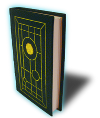
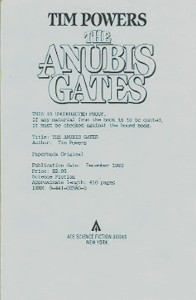
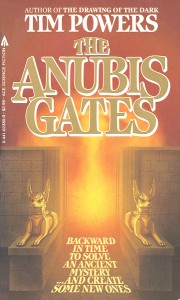
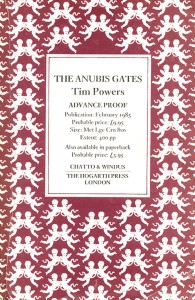
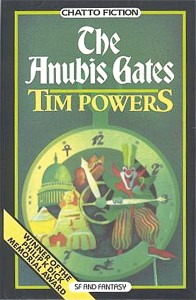

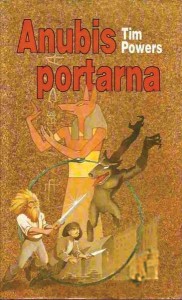
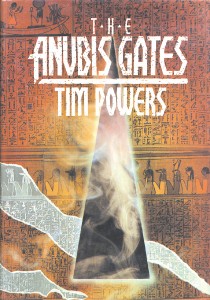
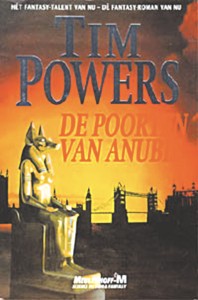
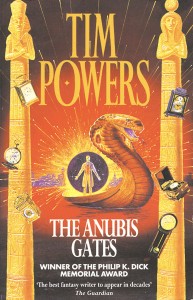
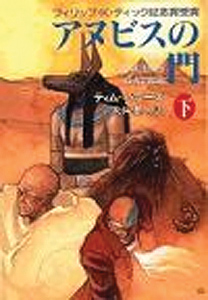
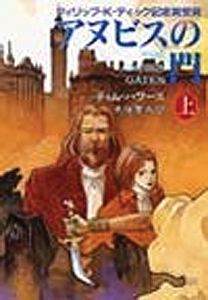
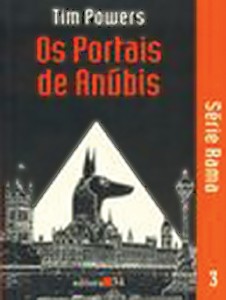
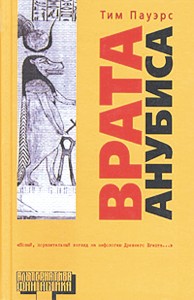
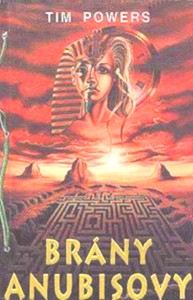

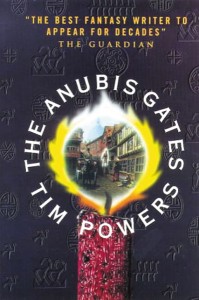
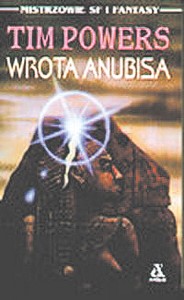
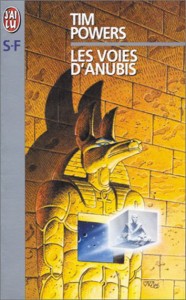
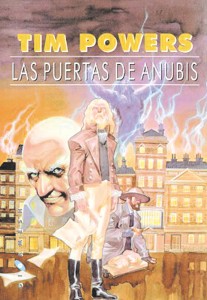
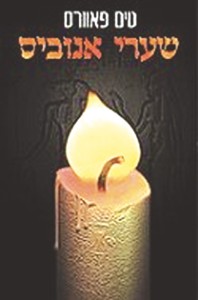
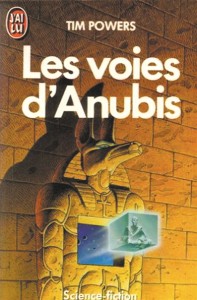
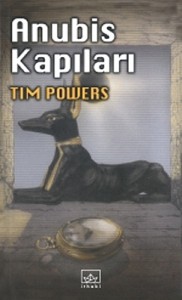
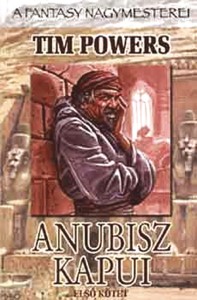
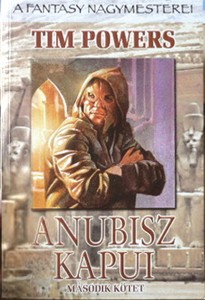
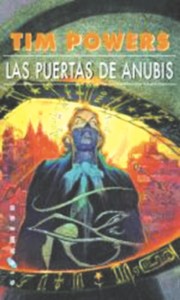
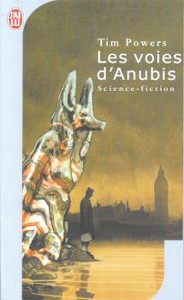
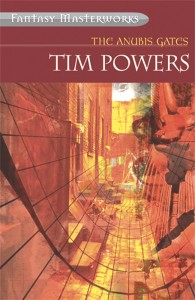






Hello and greetings, nice work done -but one note: the German edition is not shown correct: there are three German editions of the book – the first in 1988 you mentioned, but without a foreword by George R. R. Martin, this one came in 2004 and was followed by a third edition 2008 – see http://timpowers.de/romane/the-anubis-gates/ausgaben.html, is same noted in Secret Histories.
Thomas, thanks so much for the additional information on the German editions!